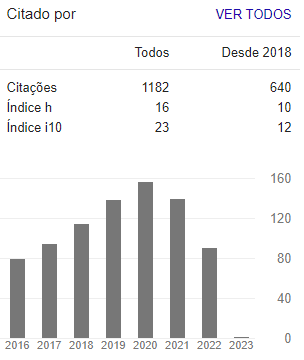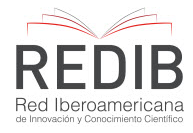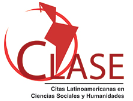
Submissions
Submission Preparation Checklist
As part of the submission process, authors are required to check off their submission's compliance with all of the following items, and submissions may be returned to authors that do not adhere to these guidelines.-
The contribution shall be original, unpublished and not being evaluated for publication by other journals; otherwise, the author ought to report this in the "Comments to the Editor".
-
Files accepted for submission shall be in Microsoft Word, Open Office or RTF format (provided they do not exceed 2MB).
-
URLs for referrals should be stated when needed.
-
The text shall have space 1,5; utilize a 12-point font; italic instead of underlining (except URL addresses); figures and tables ought to be inserted in the text, not at the end of the document as attachments.
-
The text shall follow the style standards and bibliographic requirements of the “Author Guidelines”.
-
The identification of authorship shall be removed from the file in the properties option of Word, thus guaranteeing the journal's criteria of confidentiality and when submitted for blind peer review (e.g. articles), articles shall be in accordance with the instructions made available by the journal.
-
The text shall have an abstract and keywords.
- Did you use generative AI to write this manuscript?. If you used generative AI or AI-assisted technology, please include the Statement as a supplementary document.
Artigos
Insira aqui a política desta seçãoCopyright Notice
The copyright of published articles must comply with our Copyright Notice.
Authors who publish in this journal agree to the following terms:
a) The authors retain the copyright and grant the journal the right of first publication, the work being simultaneously licensed under the Creative Commons Atribuição 4.0 Internacional, allowing the sharing of the work with acknowledgment of the authorship of the work and initial publication in this journal.
b) The authors are authorized to assume additional contracts separately, for non-exclusive distribution of the version of the work published in this journal (eg: publishing in an institutional repository or as a book chapter), with acknowledgment of authorship and initial publication in this journal.
c) Authors are allowed and encouraged to publish and distribute their work online (e.g. in institutional repositories or on their personal page) after the editorial process, as this can generate productive changes as well as increase impact and citation of published work (See The Effect of Open Access).
d) The authors of approved works authorize the journal to, after publication, transfer their content for reproduction in content indexers, virtual libraries and the like.
e) The authors assume that the texts submitted for publication are their original creation, taking full responsibility for their content in the event of any objection by third parties.
The journal reserves the right to modify, in the original text of the submitted article, normative, spelling and grammatical mistakes in order to maintain the cultured standard of language and the credibility of the journal. The journal will respect the authors' writing style. Changes, corrections or suggestions of conceptual order will be sent to the authors, when necessary. In such cases, the articles will be re-examined. The final exams will not be sent to the authors. The published works become the property of the journal, in other words, its total or partial reprinting is subject to the express authorization of the journal. In all subsequent citations, the original source of publication shall be cited and in the case of Photographic Speeches, shall be approved by the original author. The opinions expressed by the authors of the journal’s articles are of their sole responsibility.
Privacy Statement
The names and addresses given in this magazine will be used exclusively for the services provided by this publication and will not be made available for other purposes or to third parties.
In relation to data eventually submitted to the registration of users in any condition (authors, readers, reviewers, editors), it guarantees its privacy and its exclusively academic use, in accordance with Art. 4, item II, item "b", of the General Data Protection Law.
In published articles, interviews or reviews, the authors' personal data will be included, namely: full name, affiliation and last academic training, e-mail address and ORCID.










